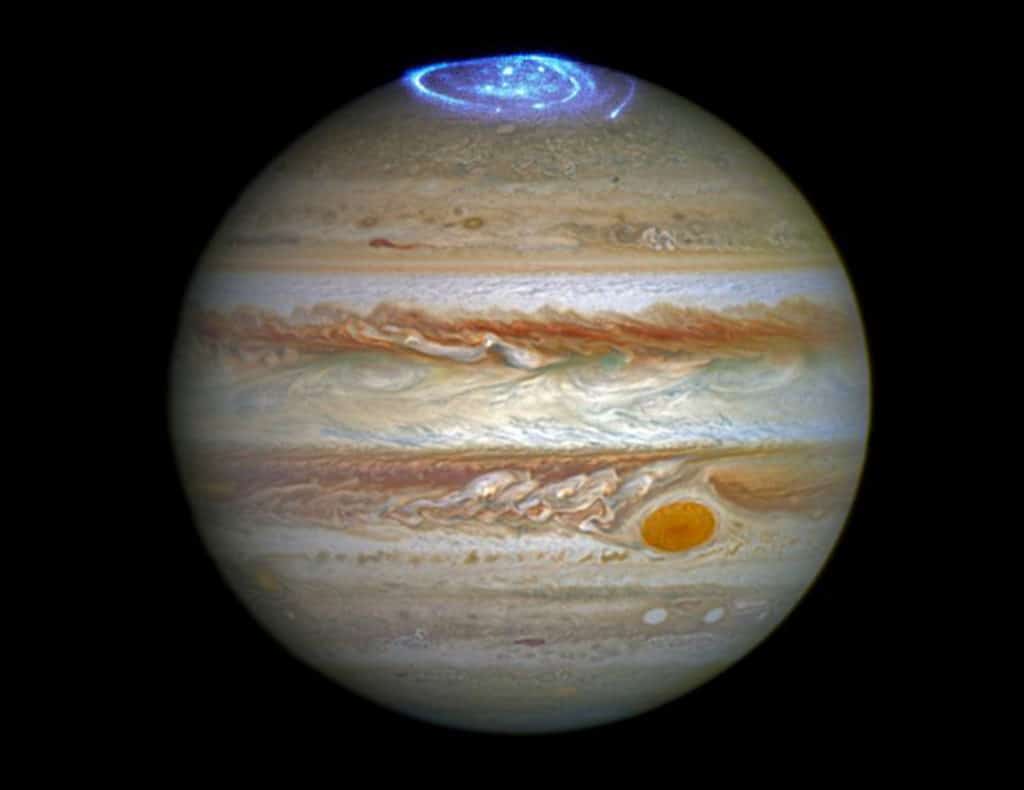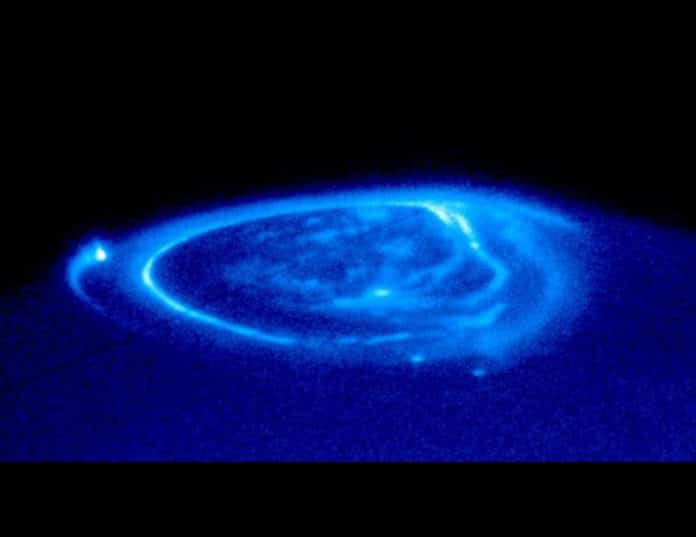Jupiter’s auroras are the most powerful in the solar system. What’s puzzling is, despite the magnitudes of these potentials at Jupiter, they are observed only sometimes and are not the source of the most intense auroras, as they are on Earth.
At Jupiter, the brightest auroras are caused by some turbulent acceleration process that remains poorly understood.
Peter Delamere, a professor of space physics at the University of Alaska Fairbanks Geophysical Institute, is among an international team of 13 researchers who have made a fundamental discovery related to the aurora of our solar system‘s most giant planet.
In their study, scientists used a newly developed global magnetohydrodynamic model of Jupiter’s magnetosphere. The model offers essential information on a previously controversial and criticized idea that Jupiter‘s polar cap is threaded in part with closed magnetic field lines rather than entirely with open magnetic field lines, as is the case with most other planets in our solar system.
Peter Delamere, a professor of space physics at the University of Alaska Fairbanks Geophysical Institute, said, We as a community tend to polarize—either open or closed—and couldn’t imagine a solution where it was a little of both. Yet, in hindsight, that is exactly what the aurora was revealing to us.

Aurora on Earth appears on closed field lines around an area referred to as the auroral oval. It’s the high latitude ring near—but not at—each end of Earth‘s magnetic axis. Although, there is an empty spot called a polar cap that exists in that rin. This polar cap is where magnetic field lines stream out unconnected—and where the aurorae rarely appear because of it. Think of it like an incomplete electrical circuit in your home: no complete circuit, no lights.
Delamere said, Jupiter, however, has a polar cap in which the aurora dazzles. That puzzled scientists.
The problem is that researchers were so Earth-centric in their thinking about Jupiter because of what they had learned about Earth’s magnetic fields.
In July 2016, NASA’s Juno spacecraft provided images of the polar cap and aurora. But those images, couldn’t resolve the disagreement among scientists about open lines versus closed lines.
Hence, scientists used computer modeling and revealed a largely closed polar region with a small crescent-shaped open flux area. This flux was responsible for about 9 percent of the polar cap region, and the rest was active with aurora.
Scientists found that Jupiter possesses a mix of open and closed lines in its polar caps.
Delamere said, “There was no model or no understanding to explain how you could have a crescent of open flux like this simulation is producing. It just never even entered my mind. I don’t think anybody in the community could have imagined this solution. Yet this simulation has produced it.“
“To me, this is a significant paradigm shift for the way that we understand magnetospheres.“
It raises many questions about how the solar wind interacts with Jupiter’s magnetosphere and influences the dynamics.
Journal Reference:
- Binzheng Zhang et al., How Jupiter’s unusual magnetospheric topology structures its aurora, Science Advances (2021). DOI: 10.1126/sciadv.abd1204
